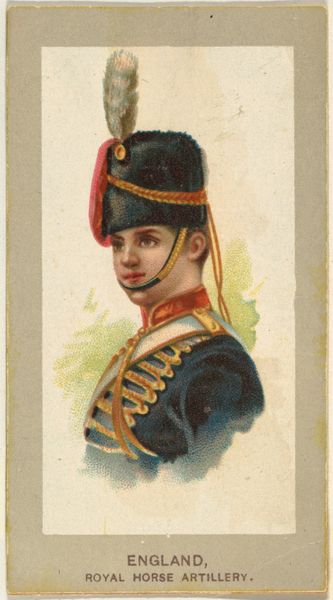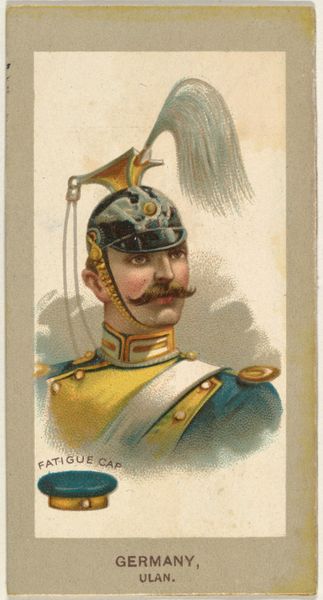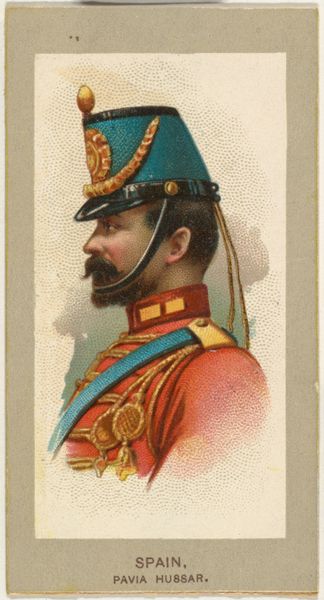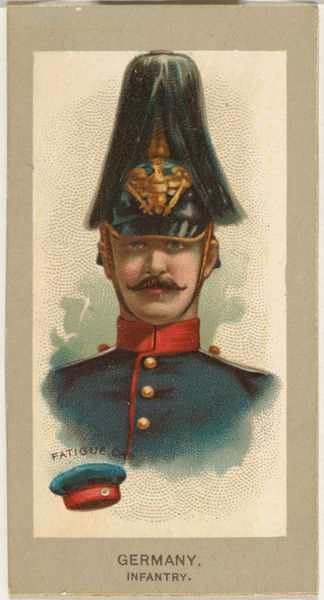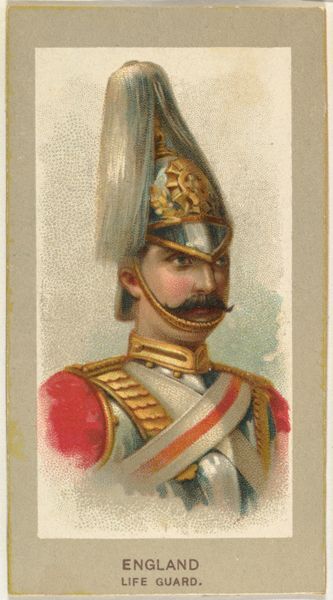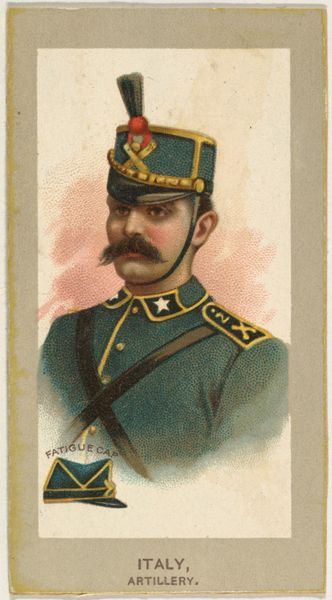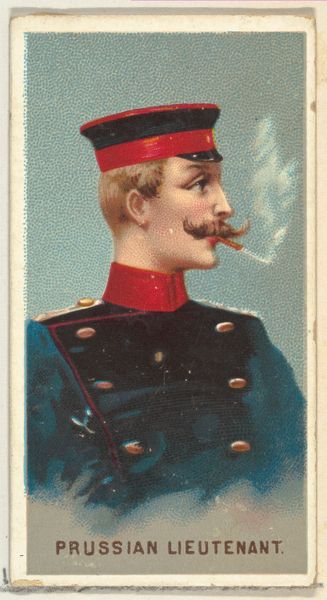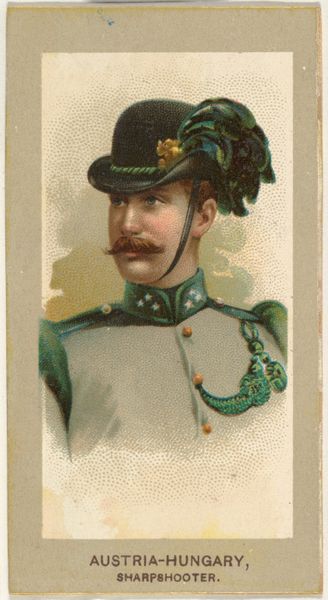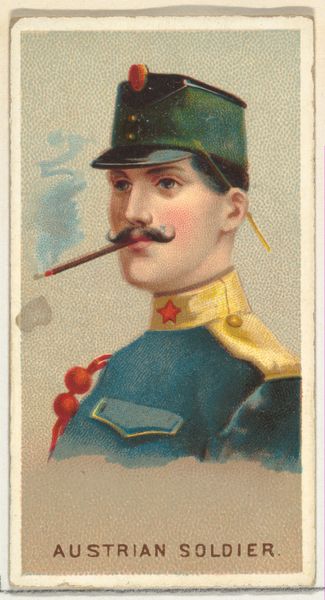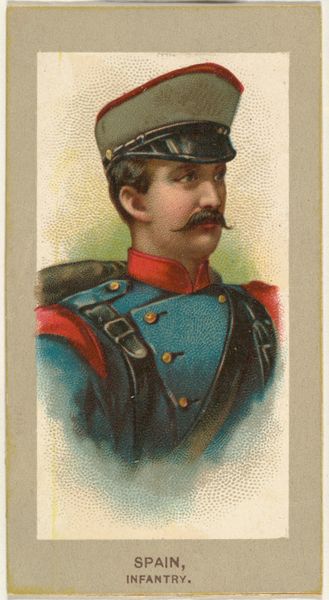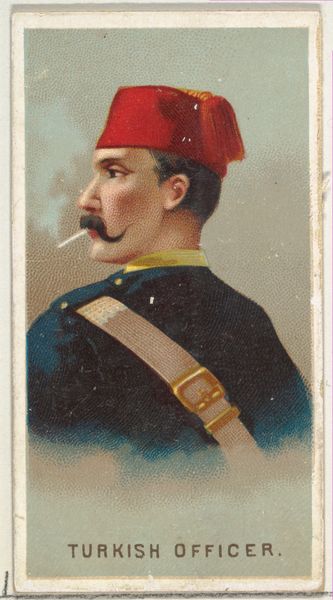
Highlander, 42nd Regiment, England, from the Military Uniforms series (T182) issued by Abdul Cigarettes 1881
0:00
0:00
drawing, print
#
portrait
#
drawing
# print
#
caricature
#
figuration
#
soldier
#
watercolour illustration
#
history-painting
#
academic-art
Dimensions: Sheet: 3 3/16 × 1 3/4 in. (8.1 × 4.4 cm)
Copyright: Public Domain
Curator: This lithograph, dating to 1881, is entitled "Highlander, 42nd Regiment, England." It comes from the Military Uniforms series produced by Abdul Cigarettes. Editor: It has this sort of quiet grandeur about it. The stark red uniform, that magnificent feathered cap—it certainly evokes the stoicism of the British soldier. Curator: Right, consider the historical context: the rise of mass-produced lithography allowed for distributing images widely. These cigarette cards offered glimpses into the visual culture of empire and military power—digestible and collectible representations. Editor: And how potent those images are! The uniform becomes an almost holy relic, encoding bravery and sacrifice. The tartan pattern and the red feathers aren't merely decorative; they symbolize Scottish identity woven into British military power. Think about the emotional impact on a viewer in that period, too. Curator: I'm curious about the production itself. Lithography was still quite labour intensive, involving skilled draughtsmen transferring images onto stone. These were essentially commodities distributed alongside tobacco, intended to foster brand loyalty. But even a mundane object can embed cultural meaning. The availability of such images democratized representation of military authority. Editor: Absolutely. The fact that these were essentially trade cards perhaps diminishes their status, but think about the repetition of these images – they are seen and felt daily, reinforcing their message. Each time one was purchased it embedded pride. Curator: It shows the interconnectedness of consumption, identity, and industrial processes. We might now look at this and consider questions about what imperial propaganda looks like. Editor: It reminds us of the symbolic power that even seemingly ordinary objects can hold and how those images have affected the fabric of the everyday life in history. Curator: Indeed, viewing this card is not simply a walk through history; it's a chance to better understand a moment of confluence. Editor: It shows how visual and material histories affect culture today.
Comments
No comments
Be the first to comment and join the conversation on the ultimate creative platform.
